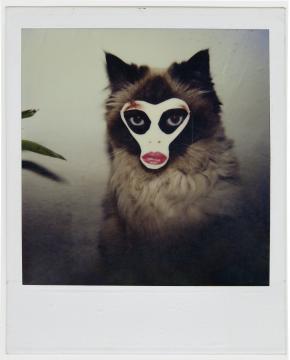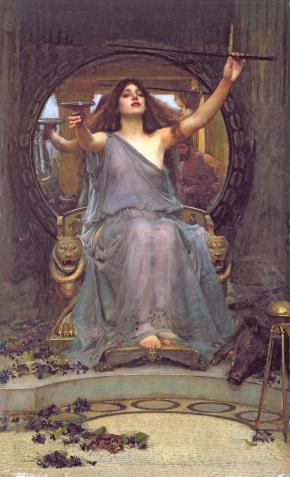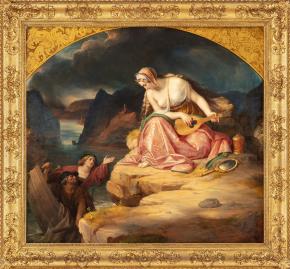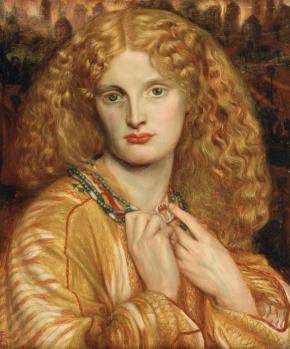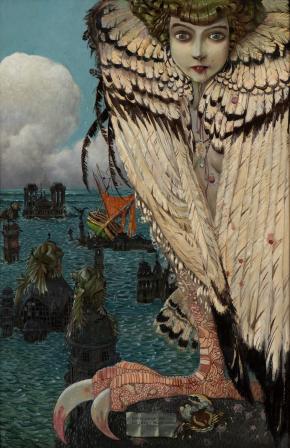Femme Fatale
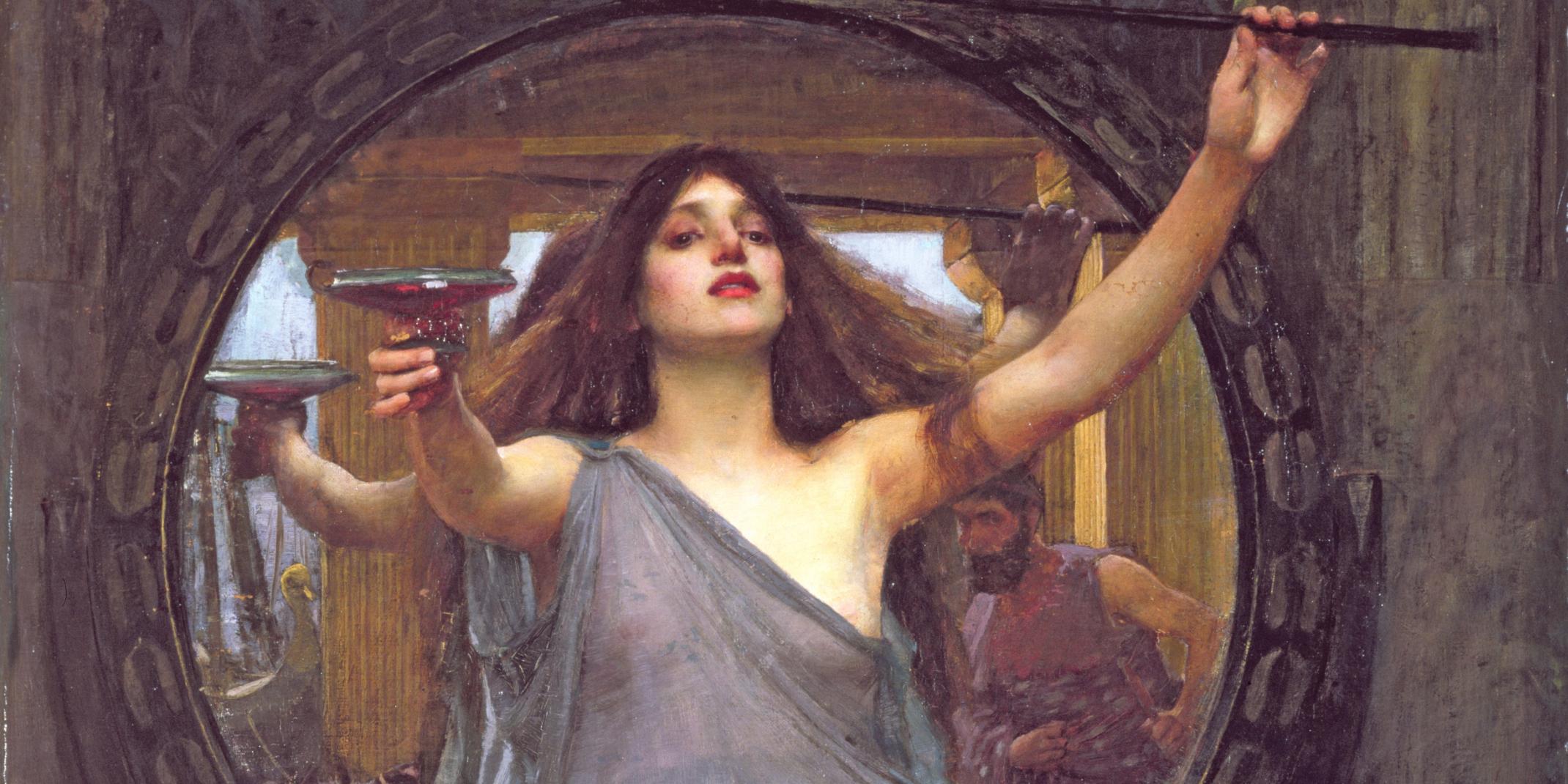
Press information
With the epoch-spanning exhibition FEMME FATALE: Gaze – Power – Gender, the Hamburger Kunsthalle is dedicating itself for the first time to diverse artistic treat-ments of the dazzling and clichéd image of the femme fatale. The stereotype of the erotic and seductive woman who holds men in her thrall, ultimately leading them to their downfall, has long been shaped by the male gaze and by a binary understanding of gender. The show will focus on various artistic manifestations of this theme dating from the early nineteenth century to the present while critically examining its origins and transformations: What historical changes and subsequent appropriation processes has the image of the femme fatale undergone? What role does it still play today? How do contemporary artists negotiate the gaze, power and gender constellations this image evokes in an effort to shift our perspective? The exhibition explores these questions based on some 200 exhibits across diverse media. On display are paintings by Pre-Raphaelite artists (Evelyn de Morgan, Dante Gabriel Rossetti, John William Waterhouse) as well as works of Symbolism (Fernand Khnopff, Gustave Moreau, Franz von Stuck), Impressionism (Lovis Corinth, Max Liebermann), Expressionism and New Objectivity (Dodo, Oskar Kokoschka, Jeanne Mammen, Edvard Munch, Gerda Wegener). Early feminist avant-garde artists (VALIE EXPORT, Birgit Jürgenssen, Maria Lassnig, Betty Tompkins), alongside recent works taking intersectional and (queer) feminist approaches (Jenevieve Aken – Philipp Otto Runge Foundation Fellow, Nan Goldin, Mickalene Thomas, Zandile Tshabalala) build a bridge to the present day. Among the paintings, drawings, prints, photographs, sculptures, installations and video works on view are a wealth of high-ranking international loans as well as major works from the collection of the Hamburger Kunsthalle. Highlights include Gustave Moreau’s major Symbolist work Oedipus and the Sphinx (1864), Edvard Munch’s painting Vampire in the Forest (1916-1918), Sonia Boyce’s much-discussed video installation Six Acts (2018), and Nan Goldin’s recent video works Sirens (2019–2021) and Salome (2019).
The »classical« image of the femme fatale was inspired mainly by biblical, mytho-logical and literary figures (such as Judith, Salome, Medusa, Salambo and the Sirens) that were associated in art between 1860 and 1920 with the notion of mortal danger. Combining the feminine ideal with ominous portents, these pictures, often featuring stylised protagonists, convey a demonisation of female sexuality. Around 1900, this female image was increasingly projected onto real people, in particular actors, dancers and artists (such as Sarah Bernhardt, Alma Mahler and Anita Berber). Striking in this context is the simultaneous advance-ment of women’s emancipation and an upsurge in images of the femme fatale. The exhibition therefore also takes a look at the ideal of the New Woman that emerged in the 1920s as a counter-image that subtly takes up aspects of the femme fatale. Equally telling is the caesura that feminist artists brought about starting in the 1960s by radically deconstructing the myth and, with it, entrenched points of view and pictorial traditions. Contemporary artistic positions in turn address questions of gender identity, female corporeality and sexuality as well as the #MeToo move-ment and the male gaze. They track the traces and transformations of the image of the femme fatale or in other cases establish explicit counter-narratives.
The exhibition is accompanied by a particularly extensive art education programme:
In addition to a diverse range of guided tours including livestreams of curator talks, a chatbot module will debut that lets visitors enter into a dialogue with six femme fatale figures from the art-works on view. A text-based dialogue system using artificial intelligence playfully tells background stories about the works and their artists. Developed jointly with the Stadtteilschule am Hafen, this module specifically addresses a younger target group. The Hamburger Kunsthalle is also offering audio descriptions for the first time. For selected exhibits, supplementary tactile copies are provided, which give people with visual impairments a way of accessing the exhibition independently by feeling contours. More audio tours are available in the Hamburger Kunsthalle app: for adults in German and English, for children from 8 years and older, and in simple language (both German). On the 4th Thurs-day of each month, a Salon fatal will dedicate itself to socially relevant topics that tie into the exhibition such as sexuality and the construction of beauty ideals. The salon will take the form of a reading, performance, panel discussion, concert or workshop, featuring changing guests. In cooperation with the Hamburger Kunsthalle, the Metropolis Kino is showing a film series on the theme of the femme fatale – from silent films to recent productions.
A free companion booklet, produced in collaboration with Missy Magazine, opens up intersectional and (queer) feminist perspectives on the show. The exhibition theme will also be explored in interdisciplinary depth in the accompanying catalogue (Kerber Verlag), scheduled for publication in early 2023. The catalogue will be available for 39 euros in the museum shop or for the bookstore price of 50 euros at www.freunde-der-kunsthalle.de.
For more information and dates, visit www.hamburger-kunsthalle.de.
Dr. Carsten Brosda, Senator for Culture and Media: »The image of the femme fatale demonstrates the extent to which the art world has long been dominated by the male gaze. Over the centuries, this image conveyed notions that have little to do with our current understanding of a free and equal society. The Kunsthalle is setting out to deconstruct this cliché by critically examining the image of the femme fatale and countering it with a feminist gaze. With this exhibition and the diverse supporting programme, the Kunsthalle is once again underscoring its aim to address issues that our relevant to our society.«
Dr. Ekkehard Nümann, Chairman of the Board of the Freunde der Kunsthalle e.V.: »A highly exciting exhibition project that the Friends of the Kunsthalle were pleased to sponsor with great conviction.«
Dr. Martin Hoernes, General Secretary of the Ernst von Siemens Kunststiftung: »Shedding light on the dazzling and clichéd image of the femme fatale in an exhibition while questioning its contemporary relevance is an exciting, progressive undertaking. With its epoch-spanning exhibits, Femme fatale encourages viewers to reflect on changing images of women and how those images are (de)constructed.«
Board of the Philipp Otto Runge Foundation: »Jenevieve Aken’s work The Masked Woman represents a multi-layered update of the femme fatale figure. In the series, she uses photographic self-portraits as an emancipatory tool to create images with which people can identify. Her staging of herself as what she calls a »super femme fatale« is as critical as it is appropriative, engaging with pressing contemporary discourses.«
Supported by: Freunde der Kunsthalle, Ernst von Siemens Kunststiftung, Rudolf August Oetker Stiftung, Philipp Otto Runge Stiftung, Behörde für Kultur und Medien Hamburg, Herbert-Plümplin-Stiftung.
As part of the exhibition, a chatbot for young people was developed by the Hamburger Kunsthalle in cooperation with the Wüstenrot Stiftung.
Verena Krubasik, Head of the Arts and Culture Theme Area of the Wüstenrot Stiftung: »Art education can only be successful if it connects cultural heritage with the lifeworlds of people today. For this to happen, that heritage must be transformed through close critical examination, and that takes the courage to set off down new paths! We are delighted to have been able to work on such a high level with the Hamburger Kunsthalle – work that was not only rewarded with a chatbot but also resulted in a variety of solutions for helping people to experience cultural heritage in an entirely new way.«
The educational programme for the exhibition is sponsored mainly by Fürst Bismarck Quelle.
Annette Kreidler, Head of Marketing, Fürst Bismarck Quelle: »With our Fürst Bismarck brand, we wish to promote cultural education across generations and societies. It is vital to us that this should not be done in a backward-looking and passive way but in a manner that promotes dialogue and focuses on issues that are relevant to today’s society. This is why we are so pleased to support the ground-breaking education and outreach programme for the FEMME FATALE exhibition.«
Cultural partner: NDR Kultur
Media partners: Hamburger Abendblatt, arte
Mobility partner: MOIA
Haspa-Galerie:
The Hamburger Sparkasse has been committed to supporting the Hamburger Kunsthalle for many years. As a token of gratitude for this generous support, the 2nd storey of the Galerie der Gegenwart, where the exhibition is being shown, is named the »Haspa-Galerie«.
